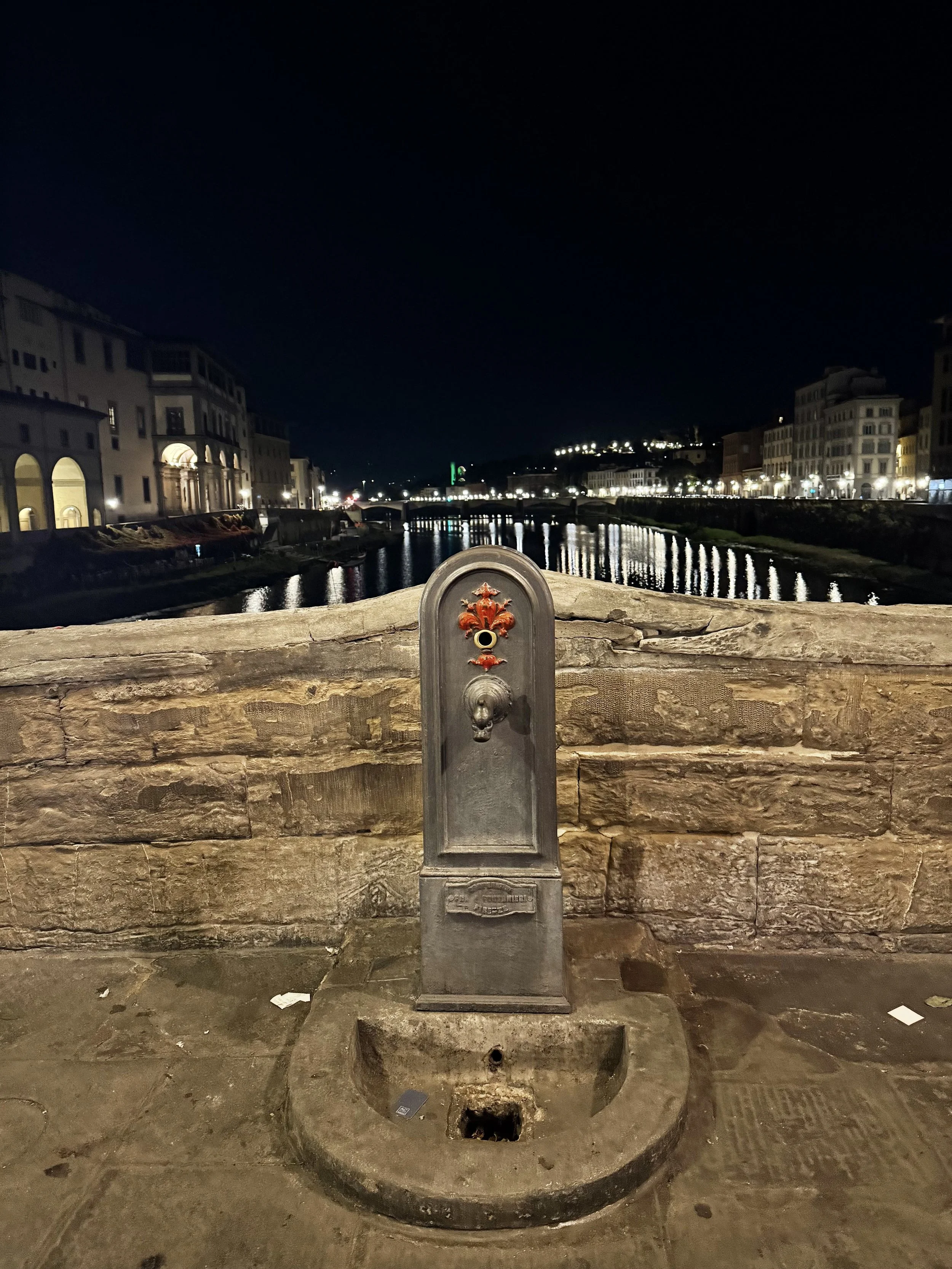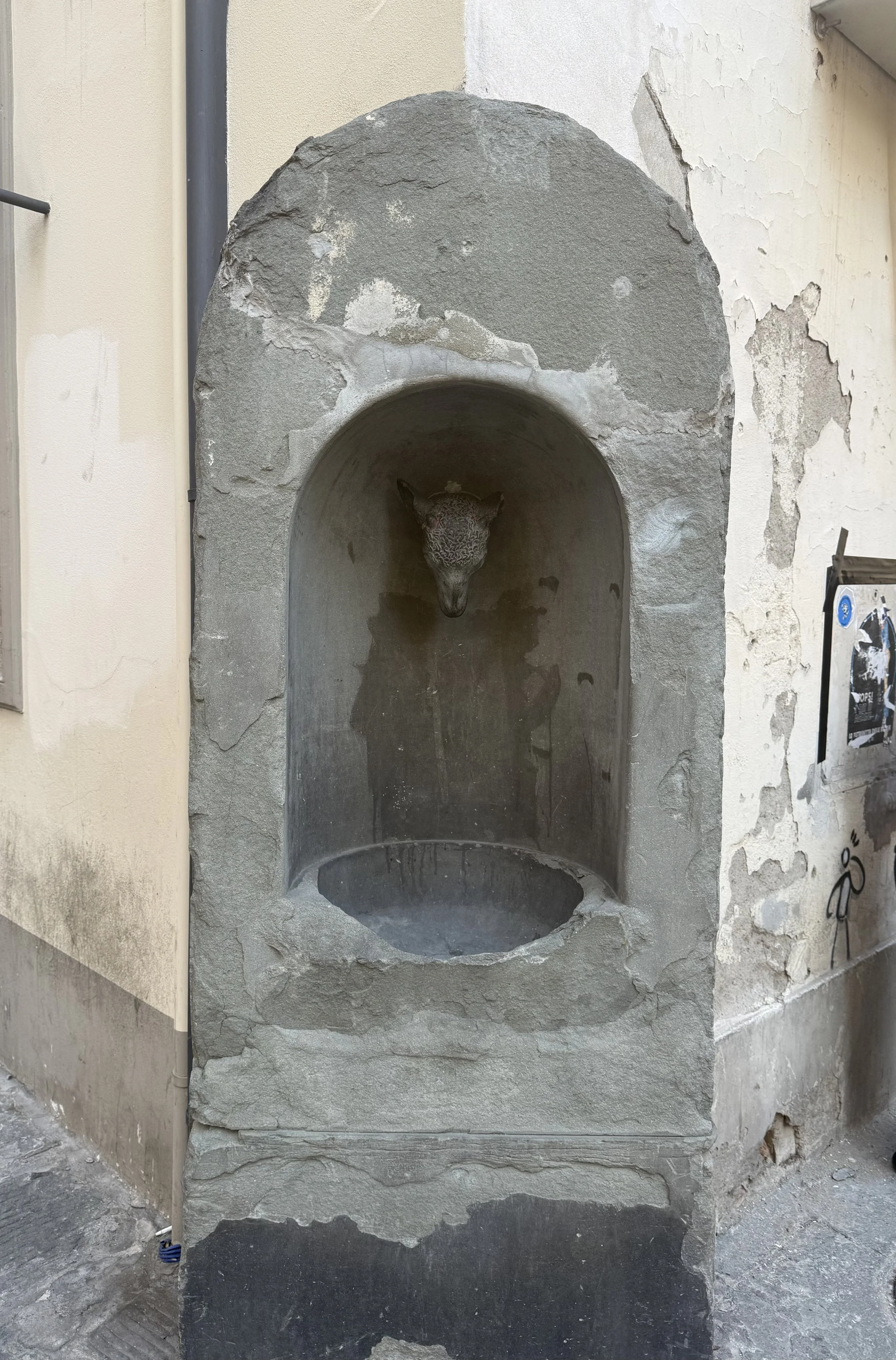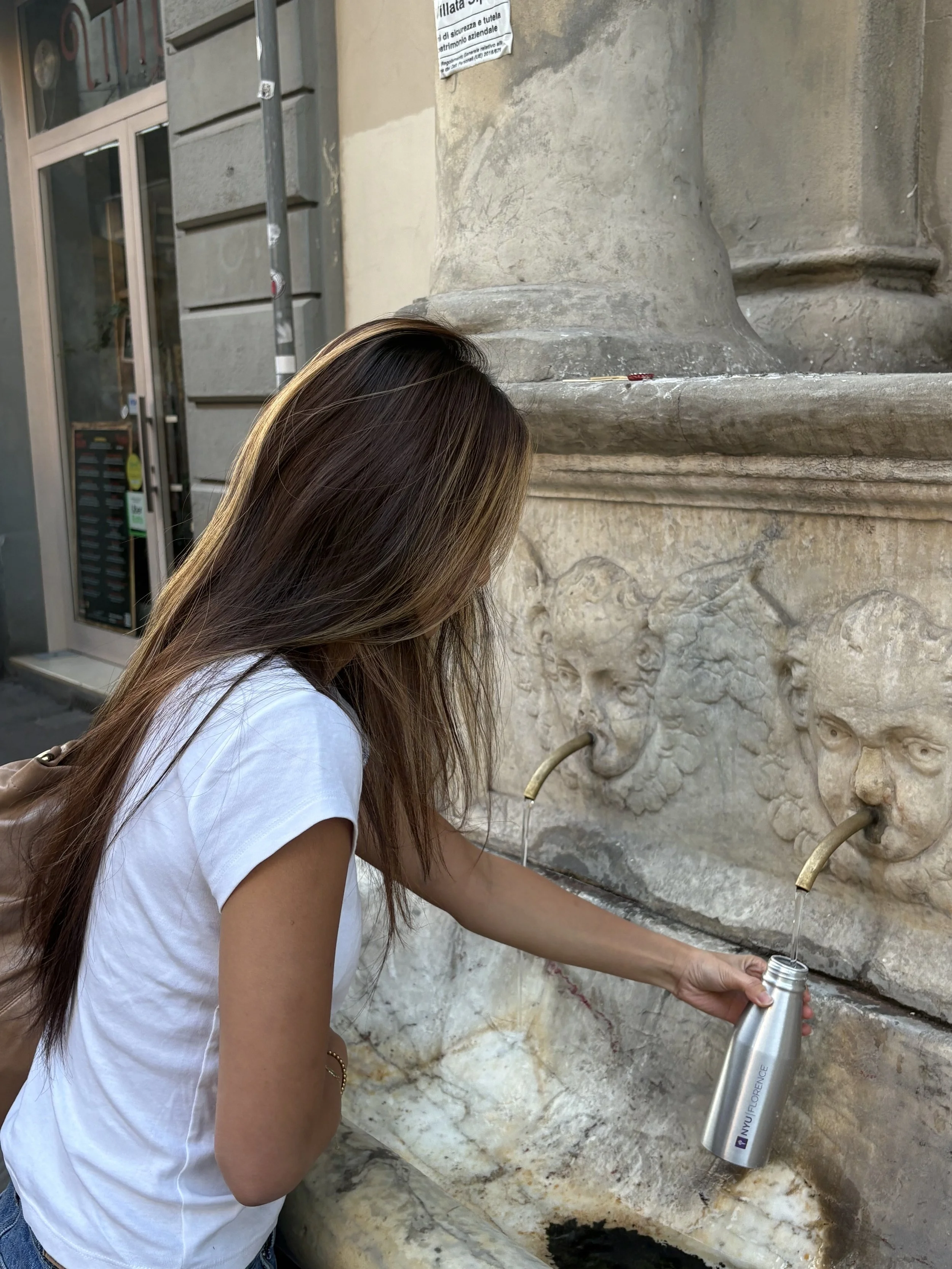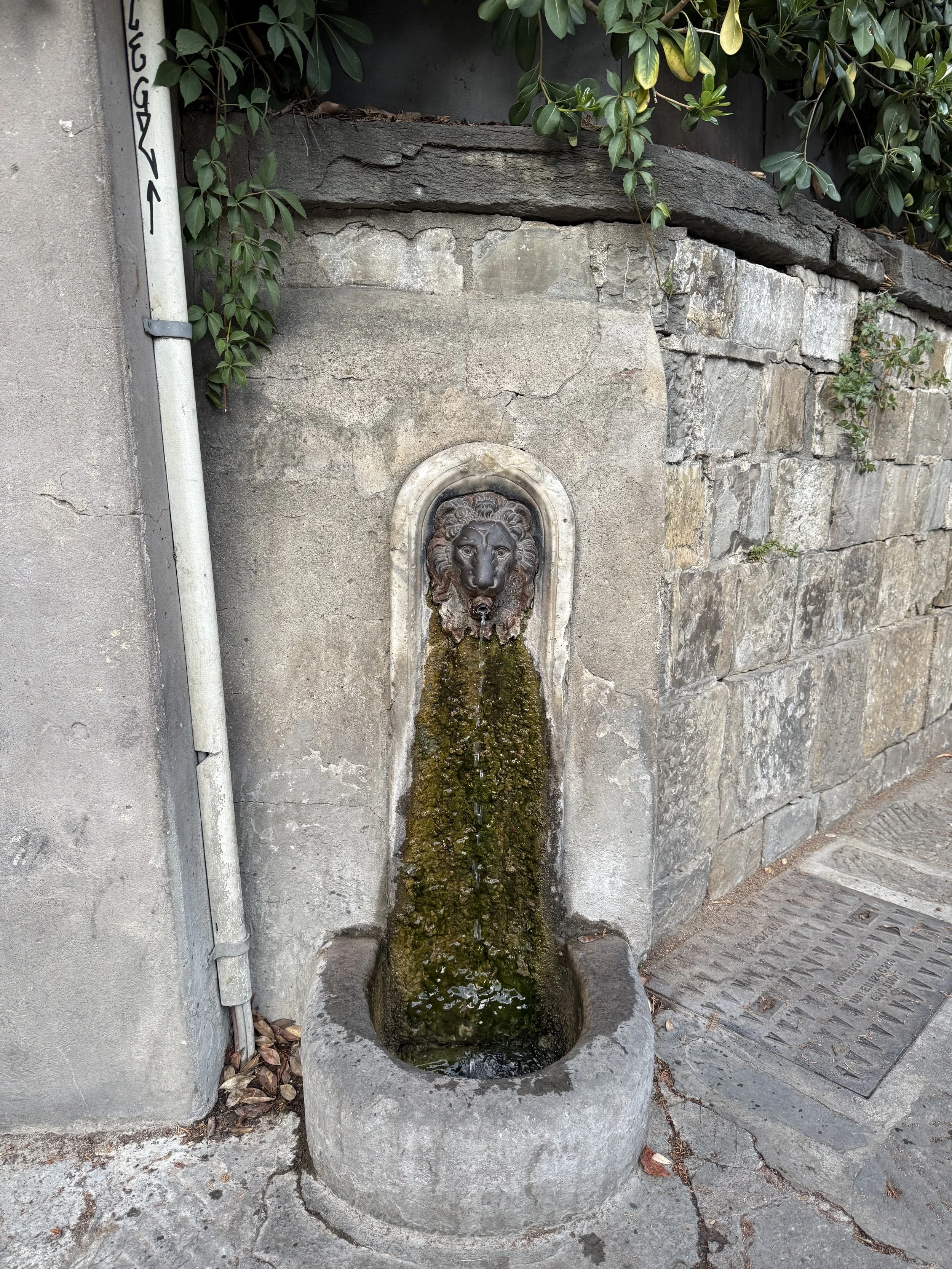Refilling Florence - Redefining Plastic Bottles
By Chloe Chan (10/19/25) — Florence, IT
When I first arrived in Florence, one of the most surprising things wasn’t the Renaissance art, the cobblestone streets, or even the endless gelato shops at every corner; it was watching people casually refill their water bottles from these tiny, intricate public fountains scattered across the city. These little fountains, called fontanelle, are just one example of Florence’s quiet commitment to sustainability. And let me tell you, they’ve completely saved me from going broke on bottled water.
I didn’t plan to spend half of my study-abroad budget on tap water in restaurants, but after a few weeks of paying 2 or 3 euros for something free everywhere else, I had to find another way. At first, I was doing what most students do–carrying around the NYU Florence water bottle they provided me with the first day I arrived, and refilling it with filtered water from the dorm lobby. But by the time I walked one block in the Italian heat, it would be gone.
That’s when I started noticing the fountains. I always thought they were just cool and pretty decorations that made me feel like I was walking through history. I had no idea they were actually for drinking! I was also suspicious. Florence, the birthplace of the Renaissance, is an old city, and the words “old pipes” and “tap water” did not sit well with me.
One day, while I was filling my bottle, my friend stopped me mid-sip and asked, “Wait…is that water safe?” I didn’t blame her–I had the same first thought. So, I asked the receptionist at my dorm, who is a local Florentine. She said, “Of course it’s safe!”
Previously, Florence didn’t have separate systems, and wastewater would sometimes be mixed with runoff, which is why historical accounts mention bad smells. However, she said that is actually not true today. It turns out the city’s water and sewage systems have been completely separated and modernized. Over time, Florence started building new aqueducts and treatment plants that keep its water clean and safe to drink.
Thanks to an initiative by Publiacqua, a company that filters, purifies, and tests water every single day, there are even special fountains that dispense both still and carbonated water for free. Yes, sparkling water, straight from the taps installed in the outer wall of the Palazzo Vecchio, on Piazza della Signoria, tucked away behind the Fountain of Neptune. One tap (left-hand side) dispenses fizzy water; the other (right-hand side), still water.
Italy actually ranks second in the world in the Environment Performance Index (EPI) for sanitation and drinking water, something my wallet and my reusable bottle are thankful for, and gives both locals and visitors peace of mind when quenching our thirst.
Every refill at a Fontanella replaces another plastic bottle that would’ve otherwise ended up in a landfill. When multiplied by thousands of other students, tourists, and residents, the impact becomes huge.
Each fountain has its own charm: some are built into stone walls, and I find others stand proudly in piazzas with little metal spouts shaped like lion heads. And talking to other students about it, we all agree that in New York, we carry reusable bottles but rarely find free refill stations. But here in Florence, the city practically insists you stay hydrated and sustainable. I’m always seeing a crowd of tourists huddled around these fountains to cool off in the summery heat here and families teaching their kids to cup their hands under the stream.
Who knew such an ancient city could teach me so much about never underestimating the power of a free water fountain, especially when it saves you so much money for another gelato.





